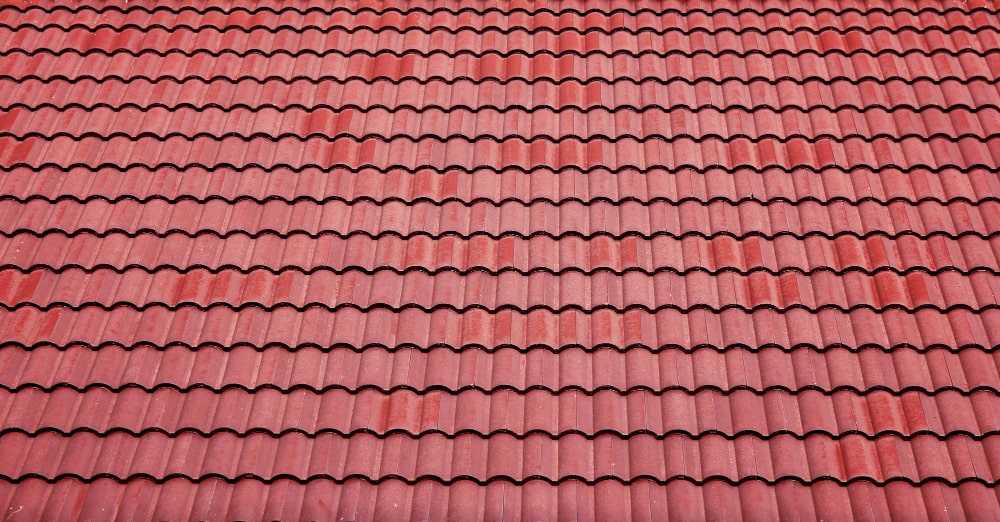So, can you put new shingles over old shingles, and will it lower the project price? The short answer is yes, but many significant considerations determine whether roofing over existing shingles is a good idea.
Putting shingles over shingles is a common practice because benefits include lower costs for installation because you’ll save money on disposal and removal of old roofs.
Before you decide on the details of your reroofing project, explore the benefits, drawbacks, regulations, and additional requirements.
Advantages of Putting New Shingles Over Old Shingles
Laying shingles over shingles is a common practice for homeowners seeking cost-effective and time-efficient solutions. The benefits make the approach the preferred choice for many homeowners despite their roof type, size and roof design.
Cost Savings
If you decide to install new shingles without removing the old ones, the installation is much simpler. You’ll save money for old roof removal and disposal of old material and debris. Complex roofs with multiple layers, steep pitch, and difficult access are more expensive to remove.
Time Efficiency
Roof repairs and replacement last several days, and the preparation phase with old roof removal can take longer than the actual roof installation. So, adding one layer of shingles without the old roof removal significantly streamlines the new roof installation with the most important benefits:
- Skipping tear-off process
- Fewer labor hours are needed
- Quicker project completion and less disruption of daily household activities
- Immediate weather protection
Less Mess
Skipping the roof tear-off process means less dirt, less debris, and less mess for you to clean. In addition, fewer means lead to organized job sites and better worker orientation.
Without tearing up the old roof, you can expect less noise and an overall less stressful project.
Disadvantages and Risks
Before you set your mind on the new shingle over old shingles installation method, consider the following drawbacks.
Weight Concerns
Installing shingles over shingles doubles the weight of your roof structure. If your home isn’t projected for such a weight load, you may experience problems with structural components. Older homes might not be strong enough to hold much weight.
Common signs of roof overload issues are:
- Sagging roofline
- Cracks in walls or ceiling
- Difficulty with windows and doors opening and closing
- Roof leakage
- Visible bowing of rafters and trusses
- Creaking sounds from the roof structure
Therefore, can you put shingles over shingles is a question you should discuss with your contractor once his team assesses the current condition of your home.
Hidden Issues
When you put shingles on top of shingles, you won’t have access to underlayment and roof issues under the roof, such as rot, leaks, and structural issues.
Not only will you install a new roof over the old one, but the issues will continue to deteriorate the appearance and the performance of your new roof.
Shorter Lifespan
When you add an additional shingle layer, you’ll compromise ventilation which leads to moisture issues. Reduced airflow with the first layer of shingles and the second leads to heat buildup. Non-regulated temperatures in the attic cause your shingles to age faster and increase the energy costs for cooling during warm months.
Warranty Issues
Most shingles manufacturers make their warranties valid when their products are installed as single layers. In addition, even if the warranty isn’t voided, the manufacturer’s warranty might not cover the potential issues with your roof.
Building Codes and Regulations
Whenever you plan on doing a home renovation project, it is important to check local regulations and permit requirements to avoid penalties and save money.
Local Building Codes
Restrictions on the number of shingle layers have been implemented for the safety and structural integrity of the properties. For example, the International National Building Code (IBC), which has been adopted by many states and local authorities, allows only two layers of shingles.
Additionally, in areas prone to earthquakes and hurricanes, such as Florida and California, many local codes only allow a single shingle layer on the roof. Texas has two-layer restrictions because of the high wind zones, and Massachusetts limits roofs to two layers because of the snow.
Permit Requirements
If shingles already there are, you may not be required to get a permit. However, it is more common for municipalities to require permits for additional shingle layers to ensure all safety standards and protocols are followed to obtain structural integrity. You can research the permit requirements and consult a professional roofer to make sure your roofing project is completely legal.
Factors to Consider Before Deciding
Is your roof capable of holding another layer of shingles? Make sure to do a thorough inspection to determine the current roof condition and come up with the best game plan.
Condition of Existing Roof
Since adding a new layer of shingles puts extra weight on your roof, hire a professional to access the existing roof and identify issues. The contractor needs to repair your roof and ensure it is in perfect condition before even considering adding a new layer.
Type of Shingles
Can you shingle over shingles? In certain cases, it isn’t recommended due to the condition of your existing shingles and their specific features. The base shingle layer needs to be in solid condition, without significant damage, no signs of warping and curling are allowed.
Next, wood or slate shingles aren’t suitable for layering because they lack adhering properties. For comparison, asphalt shingles are generally the most common choice for the base layer and second layer.
Future Plans
Adding a new shingle layer may seem like a quick fix for your roof. However, if you plan to sell your home, a full roof replacement has significant benefits over adding a second shingle layer:
- Full roof replacement improves home resale value.
- Adding an extra layer of shingles over existing ones isn’t as attractive as other roofing solutions.
- Home inspectors may flag a second layer of shingles, which may repeal buyers.
- Complete roof replacement lasts longer, requires less maintenance, and comes with less risk of deteriorated structural integrity.
Alternatives to Overlaying Shingles
When overlaying shingles isn’t an option, you can opt for a complete roof replacement, which is more costly, or a partial replacement.
Full Roof Replacement
If your budget and time allow you, opt for a complete roof replacement for its noteworthy advantages over overlaying:
- Identification of underlying issues and prompt reaction
- Smoother installation on even surfaces
- Weight reduction without extra load on the roof structure
- It is easier to ensure proper ventilation and prevent moisture issues
- Warranty protection
- New shingles last quite longer when installed on even surface
Partial Replacement
If your roof has been damaged only on one part, and the rest of the roof structure isn’t affected, your contractor may suggest partial replacement.
For example, if a tree has fallen on your roof or one part of the roof has been exposed to weather more than the rest, partial replacement can be a budget-friendly and effective solution that will expand the lifespan of your roof.
Conclusion
So, can you put new shingles over old ones? Yes, as long as the shingles are compatible, your local building code and roof structure tolerate it, However, if your budget allows you, consider complete roof replacement for added benefits such as improved aesthetic, home value, and longevity.
FAQ
Does laying shingles over shingles shorten the lifespan of a new roof?
Yes, factors such as heat retention, increased weight, hidden damage, and surface irregularities can reduce the lifespan of the new roof.
How many times can I put shingles over shingles?
Most states allow only one or two layers of shingles. However, you should consult a roofing professional to assess the current condition of your roof and determine whether overlaying shingles is safe for your home.
What happens if I overlay new shingles on my old and damaged roof?
The non-treated problems on your roof can only worsen over time, and cause severe irreparable damage, which can lead to complete roof replacement and become a safety hazard.






